AIHce 2009, taking place May 30-June 4 in Toronto, Canada, includes sessions and exhibitors across the IH spectrum. At least 11 sessions concern respiratory protection.
Tower climbing has been called "the most dangerous profession." But Don Doty, chairman of the National Association of Tower Erectors, says the industry is much safer today than when NATE was formed. He discussed the turnaround and the state of safety in the industry in an Oct. 24, 2008, conversation and follow-up e-mail with Occupational Health & Safety's managing editor.
Brutalized by the spiraling financial crises of 2008, most of us are thrilled the year has closed. Our sad awakening is that the pain of shrinking budgets, job losses, and more work with fewer resources continues for 2009! Stress is higher than usual on all parts of the workplace chain.
ASSE's Z359 Fall Protection Code Package contains each section of the ANSI/ASSE 2007 fall protection consensus standard.
The laboratory's report contains results of the NIOSH Chemical Warfare Agent Simulant Project to identify chemical simulants that simulate the permeation of Sarin (GB) and sulfur mustard (HD) through elastomeric barrier materials that are commonly used in respirators.
2008 is coming to an end fast with many lessons learned this year, from natural disasters and financial disasters alike as the U.S. economy weakens. Maintaining a program and employees' interest during a struggling economy is challenging. It requires planning and thought to get your safety message to each employee in a timely and appropriate format to keep them focused on safety at work.

A professor who has conducted nearly 200 behavior-based safety workshops at Indian industrial companies during the past 15 years reports BBS has increased safety, improved accident prevention practices, and raised the safety culture of the fast-growing country's manufacturing sector.

Dust explosions are thought to be a relatively common occurrence in a variety of industries. Plants equipped with pneumatic handling systems, which use compressed air to move factory materials and items, and air filtration systems have an inherent dust explosion risk associated with the operation of these machines.
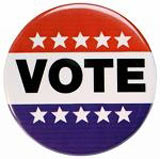
The Nov. 4 election gave voters a golden opportunity to revolutionize Washington's safety pantheon. Not only were seven of the 21 members of the U.S. Senate Health, Education, Labor, and Pensions (HELP) Committee either seeking re-election, the presidency, or retiring and leaving their seats open, but also eight of the 15 members of the Senate Appropriations Subcommittee on Labor, HHS, Education, and Related Agencies were running or leaving office -- and one of them, Republican Sen. Ted Stevens, 85, of Alaska, was convicted eight days before the election of seven federal felony charges of lying on his financial disclosure forms to hide $250,000 in gifts and home renovations. Alaska voters denied him a seventh term, early and absentee votes counted Nov. 18 indicated.
Surveying the dismal outlook for the economy in the upcoming months (years?), many of us ol' timers know safety is often one of the first areas managers cast a "cutback" eye upon when the economy turns sour. Many industries already are seeing this, with open safety positions being left dormant or abolished. Budgets are being slashed; and the use of extra skilled and unskilled help is being reduced or eliminated.

Drop into any hardware store or home improvement center, and you're likely to find aisles full of tools labeled "ergonomic." But what exactly does that mean for consumers? Simply put, ergonomics is the science of designing and producing tools, furniture, and other work-related implements that improve a worker's efficiency while reducing discomfort, fatigue, and risk of injury.

We can scarcely blame the alarming federal deficit on OSHA and MSHA funding, but then again, their funding has increased steadily in recent years. Congress and the Bush administration both are responsible for this. There was no urgency this year to finish work on the U.S. Labor Department's FY2009 budget, which covers operations and expenses from Oct. 1, 2008, to Sept. 30, 2009.
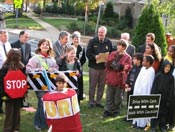
October's final night is much darker than the harmless fun you may imagine. Ghosts and goblins may be prowling the streets with witches, warlocks, princesses, pirates, and countless other costumed carousers, minds fixed on sweets and treats. The truth is, they have good reason to be frightened.

In his epic work "The Waste Land" (1922), T.S. Eliot wrote convincingly that “April is the cruellest month,” but a case can be made for September. Throughout American history, all varieties of disasters have transpired in this ninth month of the year—from shipwrecks to plane crashes to terrorist attacks—the aftermath of which have changed the way we live, work, and simply function as a society. Some of these changes have been subtle, others, such as the events of 9/11 seven years ago, drastic.
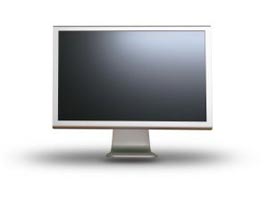
The wheels are in motion to create the Fifth Edition of the "ILO Encyclopaedia of Occupational Health and Safety," with experts all over the world invited to contribute. It will be the first 21st Century edition of a reference dating to the 1930s and the first update since the 1990s' four-volume Fourth Edition, which cost nearly $7 million and took five years to produce.
Only six directors have headed the agency since its creation, and with Dr. John Howard having handed over the post in mid-July to an acting director, a vacancy of at least six months seems likely this time.
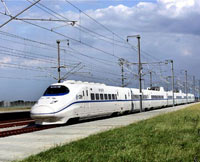
Billions of people beheld an Olympics of unprecedented size and beauty when the opening ceremony raised the curtain Aug. 8 on Beijing, China, home to 15 million residents. Their water system, fire protection, transportation, and air quality have been improved expressly to showcase this event, and American companies' products are involved in much of this transformation.
OSHA has two significant rules due for release this fall. MSHA has a proposed rule and two final rules pending. Will any of the five see the light of day before the presidency of George W. Bush ends in January 2009, probably closing the book on one of the longest-serving Labor secretaries in history, Elaine Chao?
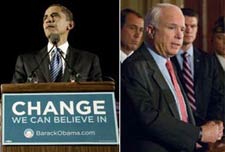
Experience vs. youth is one way to view the contest between John McCain and Barack Obama, and how they differ becomes clear when weighing these two presidential contenders' views and potential impact on workplace safety and health. Very few votes or sponsored bills exist to tell us where Obama stands on safety, health, and environmental issues, but this is not true of McCain, who was first elected to the Senate in 1986.